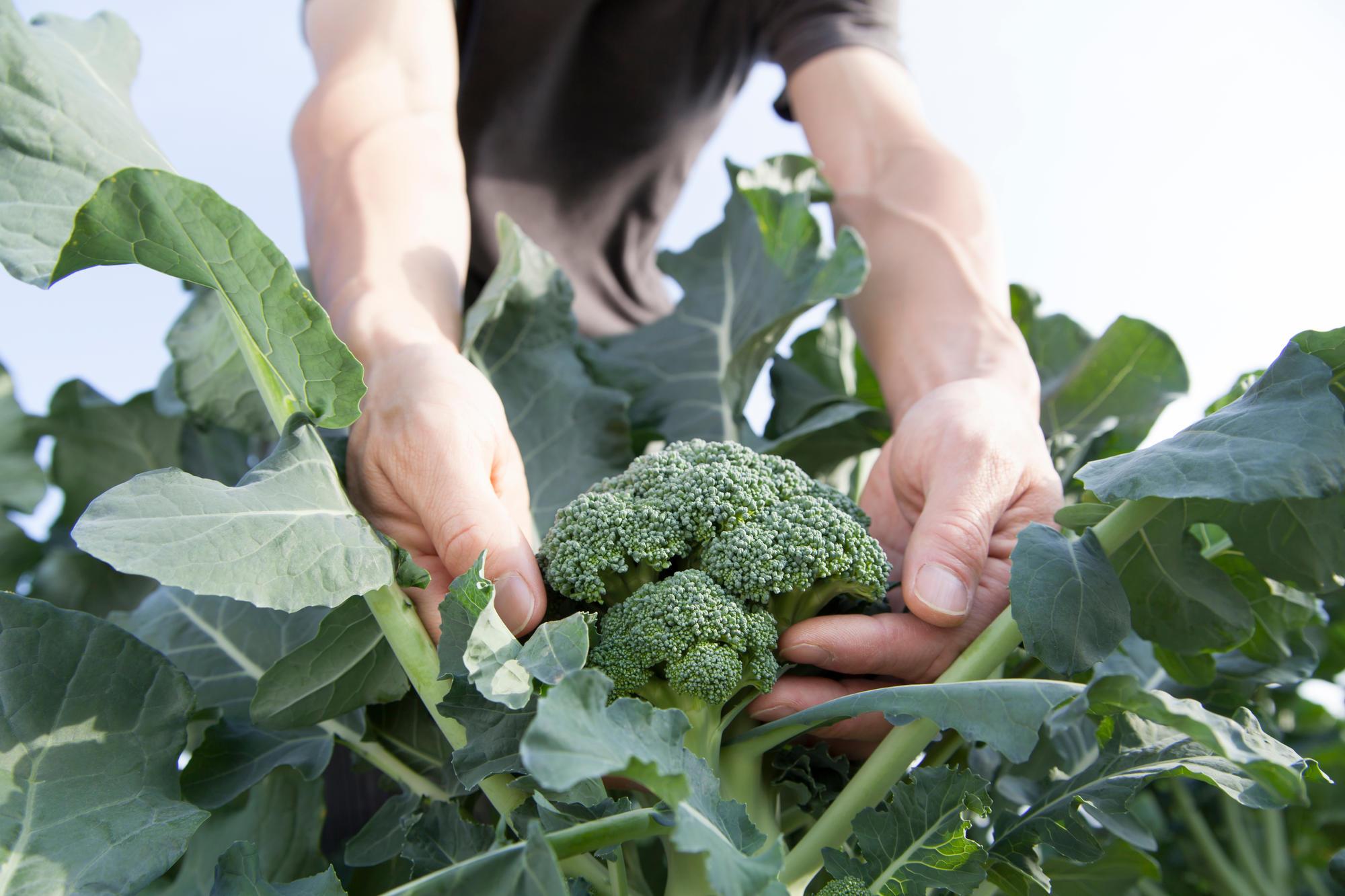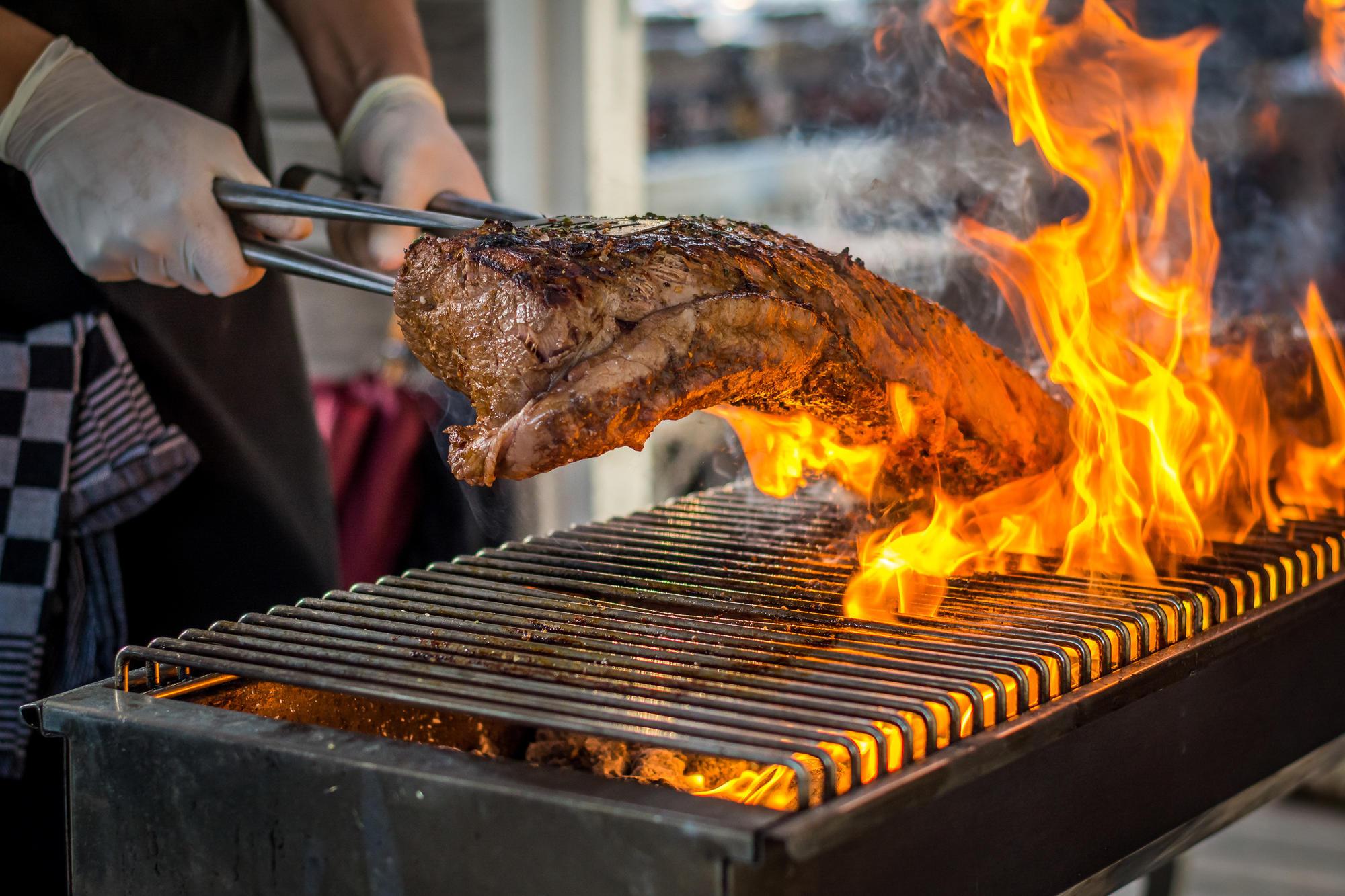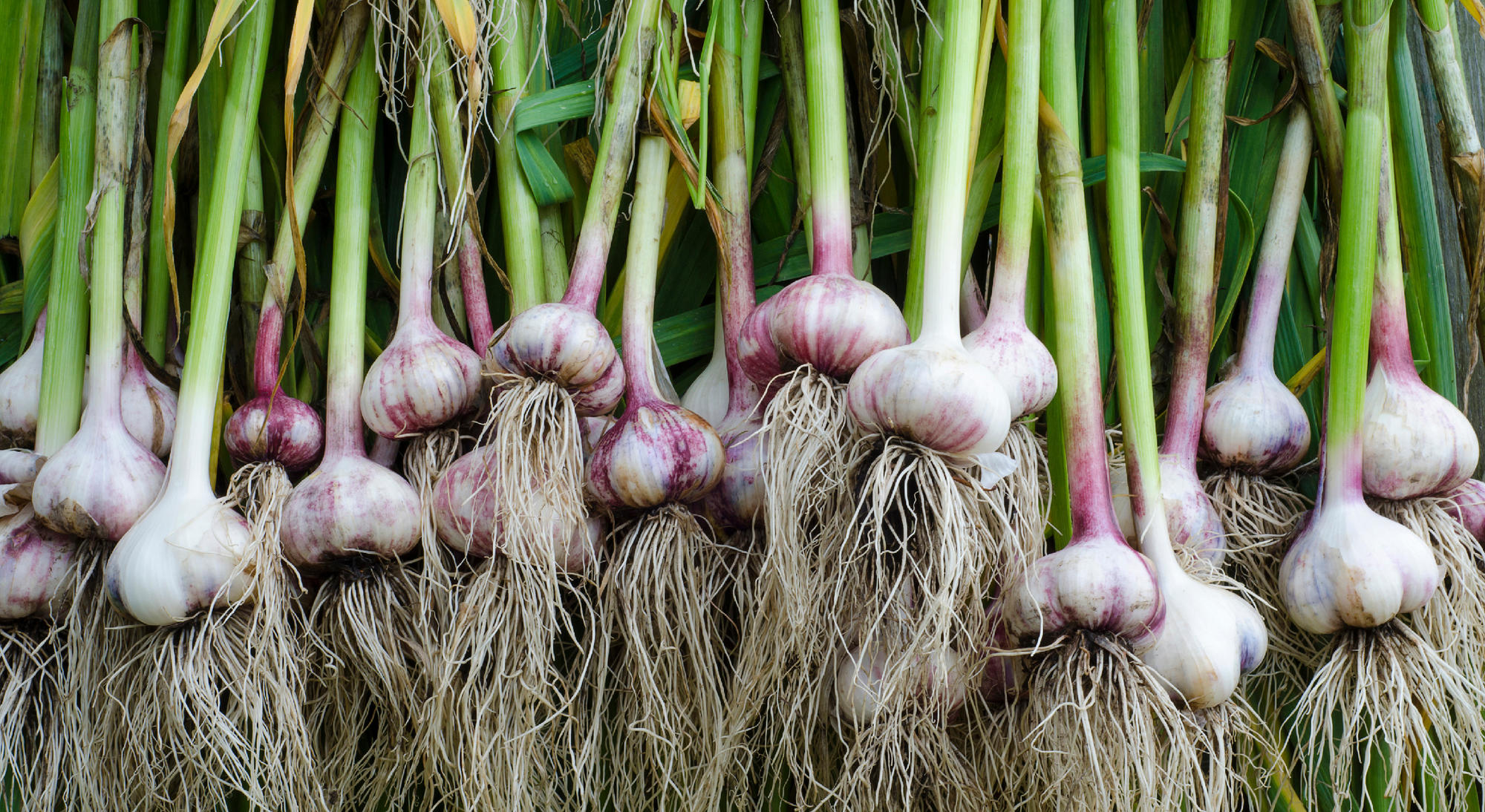Introduction
Several factors can cause or contribute to cancer. These include genetics, radiation from sunlight, tobacco, environmental toxins or chemicals, alcohol, infections, chronic inflammation and viruses, including the human papillomavirus. Age, obesity, an unhealthy diet and a sedentary lifestyle can also lead to cancer.
Of these 12 most-studied risk factors identified by the National Cancer Institute, 10 are associated with lifestyle and five are specific to diet or alcohol consumption. Diet and obesity are major contributors to cancer in the U.S.
Although scientists established the link between a poor diet and cancer decades ago, the 2019 American Institute of Cancer Research Cancer Risk Assessment Survey showed that more than 50% of Americans are unaware of the role that diet plays in their cancer risk.
This publication identifies foods that contribute to or increase your risk of cancer as well as foods that decrease the risk. It also explores best practices for diet and lifestyle.
Cancer and your genes
According to the National Cancer Institute, cancer is a genetic disease that affects how our cells grow and divide. The genetic changes that promote cancer can be inherited from our parents. Inherited genetic mutations play a significant role in about 5% to 10% of all cancers.
But genetic changes can also be acquired in our lifetime from things like tobacco smoke, radiation and the type of foods we eat. Scientists writing in the academic journal Pharmaceutical Research in 2008 concluded that the remaining 90% to 95% of cancers come from “lifestyle factors.” Poor diet accounts for 30%–35% of all cancers. Tobacco accounts for 25%–30%, and infections cause 15%–20%. Other cancer cases can be attributed to alcohol, sun exposure, environmental pollutants, stress, obesity and physical inactivity.
With cancer killing more than 1 million Americans each year (and 10 million worldwide) the researchers concluded that the disease could be prevented if more people quit smoking, ate more fruits and vegetables, exercised, drank moderately, ate less meat and more whole grains, got vaccinated, stayed out of direct sunlight, and went to the doctor regularly. “Cancer is a preventable disease that requires major lifestyle changes,” the scientists said.
Role of foods in cancer development
The Standard American Diet, a term used to describe the nutrient composition of the food Americans typically eat, scores 11 out of 100 on the dietary index which ranks intake of nutrient–rich foods. According to the National Cancer Institute, “nearly the entire U.S. population consumes a diet that is not on par with recommendations.”
This typical American diet is composed of 63% fats, oils, sweets, refined grains and other processed products, and 29% animal products. Many of these foods contribute to cancer risk. Only 8% of the standard American diet intake consists of protective foods, such as fruits, vegetables and legumes.
The 2015 World Health Organization’s International Agency for Research on Cancer classified processed meat as carcinogenic to humans and unprocessed red meat as probably carcinogenic.
Processed meat has been transformed through salting, curing, fermentation, smoking or other processes to enhance flavor or improve preservation. Processed meats include bacon, sausage, hot dogs, lunch meats and pepperoni. Red meat is unprocessed mammalian muscle meat such as beef, veal, pork, lamb, mutton, horse and goat meat.
Up to 80% of colorectal cancer is attributed to diet. Experts from 10 countries reviewed 800 studies and found consuming 50 grams of processed meat (four strips of bacon or one hot dog) per day increased risk of colon cancer by 18%.
A study of more than 200,000 women found that consuming just half that — 20 grams, the equivalent of half a hot dog per day — increased risk of breast cancer by 21%. Harvard researchers determined one serving of processed meat per day increases risk of cancer risk by 20%, and one serving of red meat per day increases risk by 13%. Despite the strong evidence linking the consumption of processed meats to cancer, diabetes, obesity and cardiovascular disease, the amount eaten by U.S. adults has not changed over the last 18 years.
Foods and lifestyle factors that contribute to cancer risk
Like red and processed meats, protein quality also contributes to cancer risk. Researchers writing in the Journal of Nature and Science found that consuming more than 20% of our daily calories from animal protein can turn on cancer genes. Reducing animal protein to 5% can turn them off.
Another study of more than 6,380 adults found that a low-protein diet during middle age is “likely to be useful for the prevention of cancer.” The researchers’ definition of low protein was 0.83 grams of protein per kilogram of ideal body weight, which is the long-accepted recommended intake of protein. According to the Mayo Clinic, a person who weighs 75 kg (165 pounds) should consume 60 g of protein a day, or about 2.11 ounces. A 3-ounce piece of meat is about the size of a deck of playing cards. The study results challenge the commonly accepted notion that more protein is better.
Refined carbohydrates have also been shown to be unhealthy. Refined carbohydrates include refined and processed sugars like sucrose and high fructose corn syrup and refined grains like white flour. These foods have been stripped of most of their fiber, vitamins and minerals, and our bodies digest them quickly. As a result, they have what nutritionists call a “high glycemic index,” which means that they cause rapid spikes in blood sugar and insulin.
A 2016 study of 3,100 participants found consuming foods with a glycemic index greater than 70 (on a scale of 100) was associated with an 88% increased risk for prostate cancer. These foods raise blood sugars very high very quickly and include sugars, refined starches, fruit juice and soda. Another study linked a high-glycemic index diet with lung cancer, showing a 49% increase in risk among those with the highest glycemic index diet compared with those with the lowest. Researchers found that a protein responsible for the formation and growth of cancers depends on sugar levels in the blood.
Diets high in sugar, refined grains and fat can lead to obesity. Obesity accounts for 14% of cancer deaths in men and 20% in women. Obesity increases the risk of at least 13 types of cancer. Obese women are seven times more likely than non-obese women to develop endometrial cancer. Obesity doubles the risk of gastric, liver and kidney cancer, and increases risk of colorectal cancer by 30% and breast cancer by 20%–40%.
Food additives and cooking
Substances are added to our foods to prolong shelf life and enhance color, flavor and texture. Although the U.S. Food and Drug Administration must approve new food additives, the National Research Council notes that the federal government does not require tests to determine if most food additives contribute to cancer. Most fall into the Generally Recognized as Safe category as established in the federal Food, Drug, and Cosmetic Act.
Some additives are proven or suspected of causing cancer. These include select artificial sweeteners, food coloring, flavor enhancers, emulsifiers and stabilizers. The following are a few of the dangerous materials found in our food supply:
- BPAs (Bisphenol A) can mimic estrogen and can contribute to cancer development and progression. These are found in plastics that are exposed to heat, like the inside of canned foods or plastic drink containers.
- Phthalates are components of soft plastics like baby bottle nipples, baby toys, cosmetics and medical tubing and devices. They have been associated with increased risk of breast cancer and colon cancer.
- Hormones added to our food supply — primarily in our meat and dairy foods — can interfere with our own production of hormones, leading to increased risk of cancer, particularly in children.
- Heavy metals, such as mercury in fish and chromium from stainless steel cookware, have been shown to trigger gastric cancer and stimulate breast cancer progression.
Cooking techniques can also increase risk of developing cancer. In the acid environment of the stomach, nitrates in preserved meat combine with amino acids in protein. There, they can be converted to nitrosamines, an organic compound and a known risk factor for gastric and esophageal cancer. Nitrosamines can also be produced by cooking meats at high temperatures, such as when they are grilled or fried.
Cooking meat over open flames causes the production of chemical compounds called heterocyclic amines. These compounds cause changes in DNA that may increase your cancer risk.
Our digestive tract hosts beneficial bacteria that break down our food and extract nutrients from it. This collection of microorganisms is called the microbiome and it makes up 80% of our immune system. However, some unhealthy species of bacteria can impact cancer initiation and progression as well as the body's response to cancer treatment therapies.
Foods and lifestyle factors that reduce cancer risk
Foods that fight cancer include fruits, vegetables, legumes, whole grains, spices, fermented foods and green tea. These foods contain active compounds such as antioxidants, prebiotics, probiotics and fiber, all of which demonstrate protective properties.
For example, broccoli, kale, cauliflower, Brussels sprouts and other cruciferous vegetables provide sulfur compounds such as sulforaphane and indole-3-carbinol. Allicin, found in garlic and onions, is also a protective sulfur compound. Onions are also a source of quercetin, shown to inhibit cancer progression.
Carotenoids are antioxidant, anti-inflammatory and anti-carcinogenic, and foods that contain these compounds are associated with a lower risk of cancer. Carotenoids are found in red, orange, yellow and green fruits and vegetables.
Resveratrol, a compound found in berries, grapes, cherries and peanuts, demonstrates anti-cancer properties and may reverse drug therapy resistance.
Cultured or fermented foods provide probiotics, which are healthy bacteria like lactobacillus that improve immune function and protect against cancer. Good bacteria can bind and destroy potential carcinogens. Fermented foods include raw sauerkraut, pickles, nondairy yogurt, kimchi and tempeh.
Soy and other legumes are recommended by the American Cancer Society for cancer prevention and survival. Legumes are a good source of protein, phytonutrients and fiber. Soy also contains phytoestrogens, which reduce mortality and the recurrence of breast cancer] and prostate cancer].
Whole grains contain such protective antioxidants as vitamin E, phenolic acids, lignans, phytic acid and fiber. Insoluble fiber ferments and suppresses tumor formation. It also acts as a prebiotic, or food for healthy gut bacteria, improving immune function. Soluble fiber lowers blood sugars and improves insulin sensitivity. Eating whole grains reduces the risk of at least 18 types of cancer, particularly colorectal cancer.
The federal Department of Agriculture defines whole grain products as food containing at least 50% whole grain.
High-fiber diets protect against breast, ovarian, gastrointestinal and endometrial cancers. Each 10-gram increase in dietary fiber is linked with a 7% reduction in colon cancer risk. The American Institute for Cancer Research recommends at least 30 grams of dietary fiber per day.
Dietary fiber is found only in plant foods. Fiber supplements are not as effective as whole foods.
Calorie restriction, a diet in which you eat far less than is typical without depriving yourself of essential nutrients or suffering malnutrition, is being studied as a way to live longer and maintain good health. It has been associated with reduced tumors, enhanced chemotherapy effectiveness and reduced toxicity from environmental chemicals.
Best practices to reduce primary and secondary cancer risk
- Adopt a whole-food, plant-based diet emphasizing fruits, vegetables, legumes and 100% whole or intact grains over unhealthy foods.
- Focus on lifestyle behaviors related to diet.
- Substitute beans, lentils and soy for meats in your diet. If you consume meat, cook over slow, moist heat, such as in a crockpot.
- Use onions, garlic and other spices to flavor beans and vegetables.
- Avoid consuming processed meats and avoid giving processed meats like hot dogs, lunch meats, sausage, bacon or pepperoni to children.
- Reduce or eliminate processed and packaged foods that are high in salt, sugar, fat and chemical additives.
- Drink plenty of water and green tea.
- Derive healthy fats from foods like avocado, nuts and seeds instead of butter, margarine, oil or spreads.
- Reduce use of canned foods in favor of fresh or frozen.
- Include fermented foods that contain live cultures like sauerkraut, kimchi, tempeh or nondairy yogurt.
- Enjoy at least one serving per day of dark fruit like blueberries, raspberries or red grapes.
Foods are a very personal choice. The first step in making healthy choices is to educate ourselves about how our bodies use the food we consume. Adapt these recommendations to suit your lifestyle and protect yourself against cancer.
References
Risk factors for cancer, Centers for Disease Control and Prevention.
The genetics of cancer, National Cancer Institute.
Diet and physical activity, American Cancer Society.
Sharma S., T. Kelly and P. Jones. Epigenetics in cancer. Carcinogenesis. 2010 Jan; 31(1): 27-36.
Yoo, C.B., P.A. Jones. Epigenetic therapy of cancer: Past, present and future. Nature Reviews Drug Discovery. 2006. 5: 37-50.
Anand, P., A.B. Kunnumakara, C. Sundaram, K. Harikumar, et al. Cancer is a preventable disease that requires major lifestyle changes. Pharmaceutical Research. 2008 Sep; 25(9): 2097-2116.
2019 AICR cancer risk awareness survey, American Institute for Cancer Research.
Tu, H., C.P. Wen, S.P. Tsai, W. Chow, et al. Cancer risk associated with chronic diseases and disease markers: Prospective cohort study. BMJ. 2018; 360: k134.
Standard American Diet, NutritionFacts.org.
Diet Quality Index, International Dietary Data Expansion Project.
Bouvard, V., D. Loomis, K. Guyton, Y. Gross, et al. Carcinogenicity of consumption of red and processed meat. The Lancet Oncology. 2015; 16(16): 1599-1600.
Bingham, S.A. Diet and colorectal cancer prevention. National Library of Medicine, National Center for Biotechnology Information. 2000 Feb; 28(2): 12-6.
Zeng, L., M. Ruan, J. Liu, E. Naumova, et al. Trends in processed meat, unprocessed red meat, poultry and fish consumption in the United States, 1999-2016. Journal of the Academy of Nutrition and Dietetics. 2021 Jul; 119(7); 1085-1098.
Campbell, TC. Cancer prevention and treatment by wholistic nutrition. Journal of Nature and Science. 2017 Oct; 3(10): e448.
Levine, M.E., J.A. Suarez, S. Brandhoirst, P. Balasubramanian, et al. Low protein intake is associated with a major reduction in IGF-1, cancer, and overall mortality in the 65 and younger but not older population. Cell Metabolism. 2014 Mar; 19(3): 407-417.
Makarem, N., E.V. Bandera, Y. Lin, P.F. Jacques, et al. Consumption of sugars, sugary foods, and sugary beverages in relation to adiposity-related cancer risk in the Framingham offspring cohort. Cancer Prevention Research (Phila). 2018 Jun; 11(6): 347-358.
Makarem, N., Y. Lin, E.V. Bandera, P. Jacques, N. Parekh. Dietary carbohydrate intake, glycemic index and glycemic load in relation to adiposity-related cancer risk: results from the Framingham offspring cohort (1991-2013). Presented at Experimental Biology 2016, April 2-6, 2016; San Diego, CA.
Melkonian, S.C., C.R. Daniel, Y. Ye, J.A. Pierzynshi, et al. Glycemic index, glycemic load and lung cancer risk in non-Hispanic whites. Cancer Epidemiology, Biomarkers & Prevention. 2016 Mar; 25(3): 532-9.
Sanghvi, V.R., J. Leibold, M. Mina, G. Ciriello, et al. The oncogenic action of NRF2 depends on deglycation by fructosamine-3-kinase. Cell. 2019 Aug; 178(4): 807-819.
Obesity and cancer, National Cancer Institute.
Diet, nutrition and cancer: Directions for research, National Center for Biotechnology Information.
Carcinogenicity of food additives and contaminants, National Center for Biotechnology Information.
Gao, H., B.J. Yang, N. Li, L.M. Feng, et al. Bisphenol A and hormone-associated cancers: Current progress and perspectives. Medicine (Baltimore). 2015 Jan; 94(1): e211.
Lopez-Carillo, L., R.U. Hernandez-Ramirez, A.M. Calafat, L. Torres-Sanchez, et al. Exposure to phthalates and breast cancer risk in northern Mexico. Environ Health Perspectives. 2011 Apr; 118(4): 539-544.
Romaniuk, A., M. Lyndin, Y. Lyndina, S. Romaniuk, et al. Heavy Metals Effect Breast Cancer Progression. Journal of Occupational Medicine and Toxicology. 2017 Nov; 12z; 32.
Chen, H.P., Y.K. Lee, S.Y. Huang, P.C. Shi, et al. Phthalate exposure promotes chemotherapeutic drug resistance in colon cancer cells. Oncotarget. 2018 Mar; 9(17): 13167-13180.
Opposition to the use of hormone growth promoters in beef ands dairy cattle production, American Public Health Association.
Yuan, W., N. Yang, X. Li. Advances in understanding how heavy metal pollution triggers gastric cancer. Biomedical Research International. 2016 Oct; 7825432.
Song, P., L. Wu, W. Guan. Dietary nitrates, nitrites and nitrosamines intake and the risk of gastric cancer: A meta-analysis. Nutrients. 2015 Dec; 7(12): 9872-9895.
Chemicals in meat cooked at high temperatures and cancer risk, National Cancer Institute.
About the human microbiome, NIH Human Microbiome Project.
Gopalakrishnan, V., B.A. Helmink, C.N. Spencer, A. Reuben, J.A. Wargo. The influence of the gut microbiome on cancer, immunity and cancer immunotherapy. Cancer Cell. 2018 Apr; 33(4): 570-580.
AICR’s foods that fight cancer and foods to steer clear of explained, American Institute for Cancer Research.
Tortella, S.M., S.G. Royce, P.V. Licciardi, T.C. Karagiannis. Dietary sulforaphane in cancer chemoprevention: The role of epigenetic regulation and HDAC inhibition. Antioxidants and Redox Signaling. 2015 Jun; 22(16): 1382-1424.
Katz, E., S. Nisani, D.A. Chamovitz. Indole-3-carbinol: A plant hormone combatting cancer. F1000Research. 2018 Jun; Faculty Rev 689.
Petrovic, V., A. Nepal, C. Olaisen, S. Bachke, et al. Anti-cancer potential of homemade fresh garlic extract is related to increased endoplasmic reticulum stress. Nutrients. 2018 Apr; 10(4): 450.
Jeong, J.H., J.Y. An, Y.T. Kwon, J.G. Rhee, Y.J. Lee. Effects of low dose quercetin: Cancer cell-specific inhibition of cell cycle progression. Journal of Cellular Biochemistry. 2009 Jan; 106(1): 73-82.
Eliassen, A.H., S.J. Hendrickson, L.A. Brinton, J.E. Buring, et al. Circulating carotenoids and risk of breast cancer: Pooled analysis of eight prospective studies. Journal of National Cancer Institute. 2012 Dec; 104(24): 1905-1916.
Nishino, H., H. Tokuda, M. Murakoshi, Y. Satomi, et al. Cancer prevention by natural carotenoids. Biofactors. 2000; 13(1-4): 89-94.
Ko, J.H., G. Sethi, J.Y. Um, M.K. Shanmugam, et al. The role of resveratrol in cancer therapy. International Journal of Molecular Sciences. 2017 Dec; 18(12): 2589.
Gorska, A., D. Przystupski, M.J. Niemczura, J. Kulbacka. Probiotic bacteria: A promising tool in cancer prevention and therapy. Current Microbiology. 2019 Apr; 76(8): 939-949.
Kwak, S.H., Y.M. Cho, G.M. Noh, A.S. Om. Cancer prevention potential of kimchi lactic acid bacteria (Weissella cibari, Lactobacillis plantarum). Journal of Cancer Prevention. 2014 Dec; 19(4): 253-258.
Chi, F., R. Wu, Y.C. Zeng, R. Xing, et al. Post-diagnosis soy food intake and breast cancer survival: A meta-analysis of cohort studies. Asian Pacific Organization for Cancer Prevention. 2014; 14(4): 2407-12.
Jacobsen, B.K., S.F. Knutsen, G.E. Fraser. Does high soy milk intake reduce prostate cancer incidence? The Adventist Health Study (US). Cancer Causes Control. 1998 Dec; 9(6): 553-7.
Makarem, N., J.M. Nicholson, E.V. Bandera, N.M. McKeown, N. Parekh. Consumption of whole grains and cereal fiber in relation to cancer risk: A systematic review of longitudinal studies. Nutrition Reviews. 2016 Jun; 74(6): 353-373.
CACFP (Child and Adult Care Food Program | USDA-FNS), National CACFP sponsors.
Shankar, S., E. Lanza. Dietary fiber and cancer prevention. Hematology/oncology clinics of North America. 1991 Feb; 5(1): 25-41.
High-fiber diet may reduce the risk of breast cancer, American Institute for Cancer Research.
O’Flanagan, C.H., L.A. Smith, S.B. McDonell, S.D. Hursting. When less may be more: Calorie restriction and response to cancer therapy. BMC Medicine. 2017 May; 15: 106.



